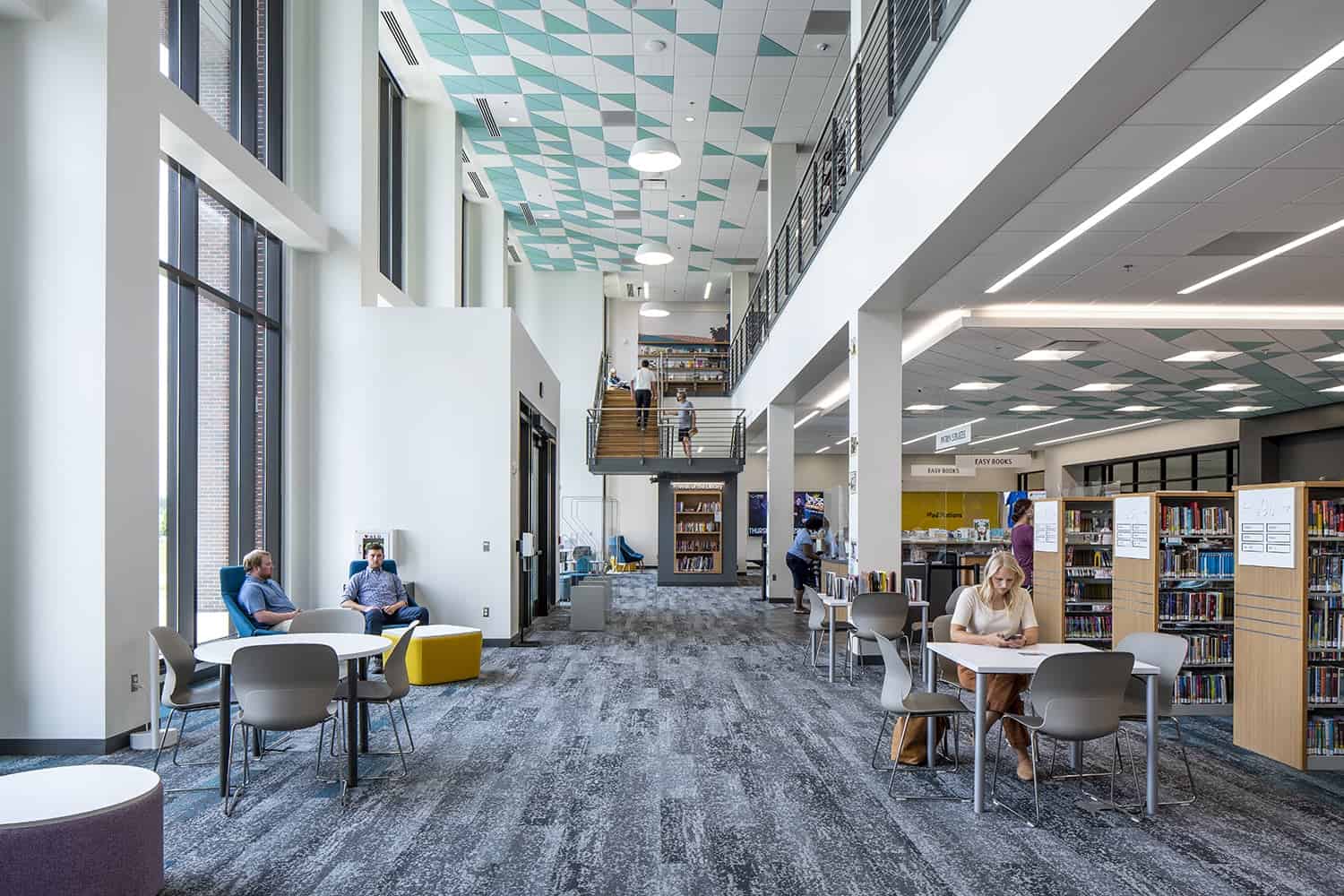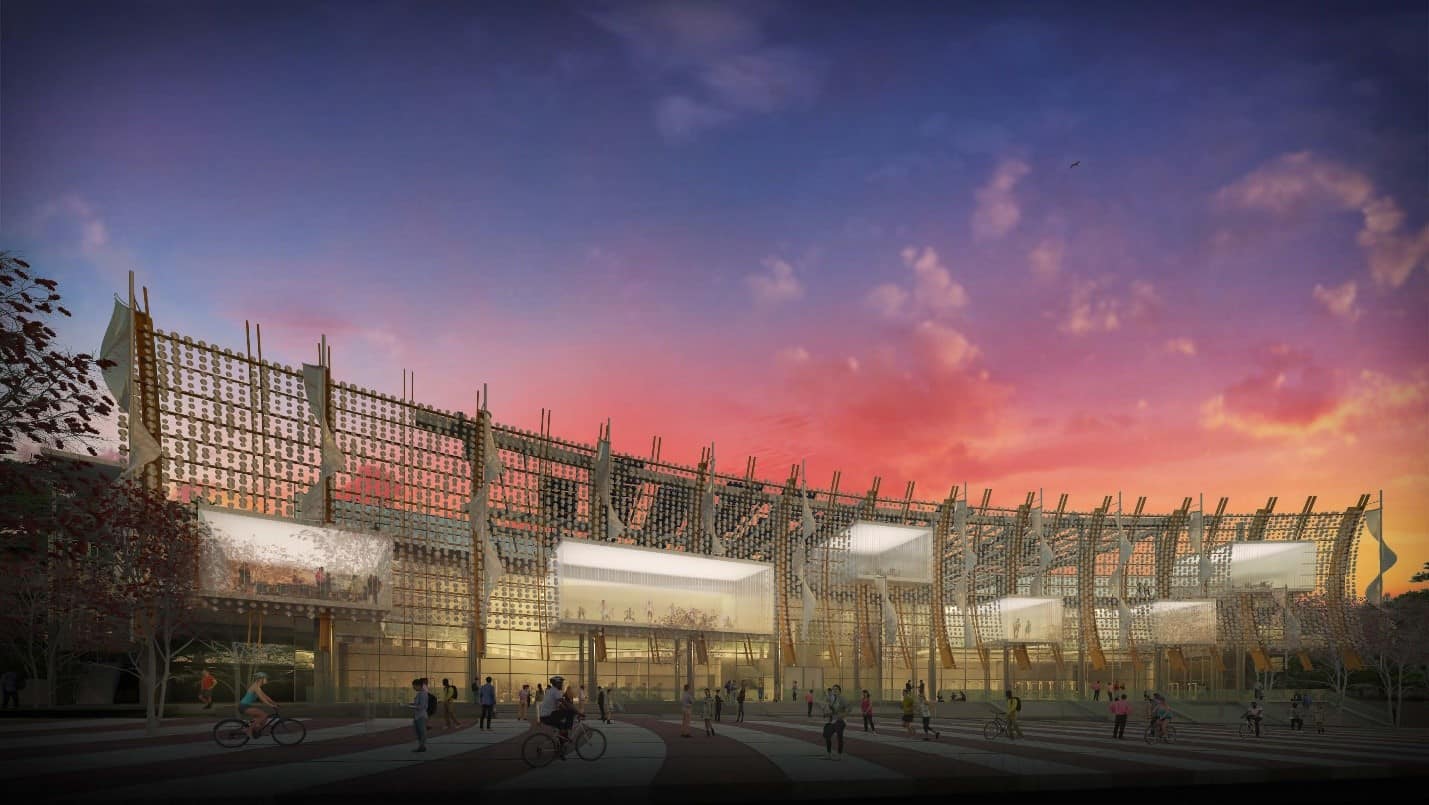It’s no surprise that the industries in which we design for are ever-changing. How can we anticipate these changes so that our clients benefit from timeless spaces that elevate the performance of their organizations for years to come? We recently sat down with Thomas Carlson-Reddig, our Community Practice Leader, to discuss the future of our education/civic buildings and how client expectations are changing and driving the way we design inspired, connected spaces that enrich the communities in which we live.
What does the future of your industry hold?
Since our Community Practice encompasses several project types, K-12 schools, higher education and civic facilities, I’ll address each one independently, starting with schools.
Many schools were built in the 1960’s and 70’s and may have reached their lifespan, so major renovations, additions or replacements will be needed over the next 5-10 years. And while numerous factors have and will continue to shape the design of schools, some of the more important ones are:
- Adaptability: more varied ways of learning require different kinds of learning environments, including outdoor learning
- Security: this driver of design is sometimes at odds with the kind of learning environment children need
- Flexibility: more districts are combining public facilities, particularly in growing urban areas
- Educational Programs: an increasing number of schools are offering STE(a)M and/or workforce training in cooperation with local industries
- Sustainability: more districts are interested in creating healthier and more energy efficient schools
- Equity: a renewed interest in creating greater equity and perhaps greater integration in schools
In higher education, public and private education is costly, especially to those with greatest need. Non top-tier private colleges are competing to maintain enrollment while public universities are seeking partnerships as public funding continues to decline. Both have outdated buildings that likely will need to undergo renovation.
Flexibility and adaptability continue to be important, impacting the need for and use of numerous higher education facilities. For example:
- Libraries are being reconsidered as the need for books declines but research and collaboration increases
- Office space is being reassessed as younger faculty have different needs and utilization is declining
- Student support spaces need expansion or centralization as student success and support remain a priority
Other significant trends impacting the future of higher education include:
- A likely decrease in student housing due to declining enrollment and hybrid models of education
- A fluid need for sports and recreation and other student life-oriented facilities that depends on growth, the state of the existing facilities and each institution’s ability to fundraise
- Continued growth in Science and Technology, with an emphasis on research, as partnerships with the private sector rise
- Increased interest in brand and identity as competition grows among colleges and universities
From a civic perspective, funding at the state, county and municipal levels has been scarce but the demand for civic facilities will grow, especially in urban centers. Many key influencers are being re-evaluated, prompting the need to remain nimble as the types of facilities needed is determined.
- Arts facilities have been devastated by the pandemic, but pent up demand may lead to more funding for arts or other cultural facilities.
- Museums and other cultural facilities are increasing in high growth areas.
- A rise in parks, community and recreation centers to help improve neighborhoods and quality of life is a definite possibility.
- Policing is being re-examined, likely resulting in different kinds of facilities to serve the public (more health and human services facilities, for example).
- Many cities and counties are seeking carbon neutrality by 2030.
Generally speaking, interest in partnerships among public entities continues to increase, as does the desire for healthier and more sustainable buildings and the expectation of equity within design.

What client priorities are driving design?
Thinking on behalf of our clients and staying abreast of the challenges and opportunities they face remains first and foremost in our minds.
For starters, clients are becoming more interested in simplifying the design and construction process, so delivery models such as design-build will continue to impact how we design and deliver facilities. Similarly, there is a continued interest in ways to build faster and more economically, prompting deeper exploration of processes and technologies that help achieve these goals.
Climate change and Justice, Equity, Diversity, Inclusion are among most of our clients’ top priorities, resulting in the demand for more sustainable expertise and the selection of design firms that are more reflective of the communities we serve.
And while the implications aren’t yet fully realized, the potential for free college education and urbanization, mass transit and mixing of uses will change what and how we design.

